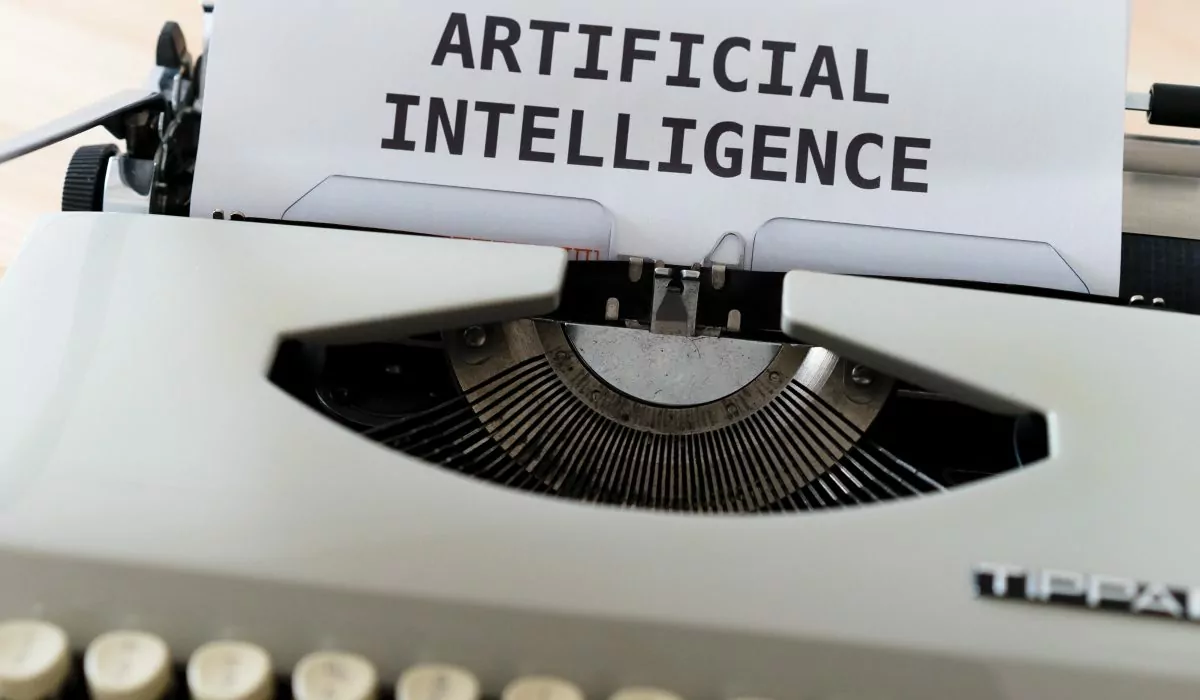Using Artificial Intelligence in Advertising
AI is a rapidly advancing technology that is changing the way we live and work. In recent years, AI has made significant leaps in various fields, including healthcare, finance, transportation, and entertainment. One of the most notable areas of impact is AI in advertising, where it is revolutionizing how businesses reach and engage with consumers.
As AI continues to advance, it has the potential to transform every aspect of our lives. However, this rapid development also raises concerns about the broader impact of AI on society.
Advertising is an essential aspect of business and marketing that enables brands to reach and engage with their target audience. In the digital age, the advertising landscape is constantly evolving, with new technologies and platforms emerging regularly. Artificial Intelligence is one such technology that has the potential to revolutionize advertising. With its ability to process and analyze extensive amounts of data, automate processes, and personalize content, AI is poised to transform the way brands create and deliver ads. In this article, we will explore the various ways in which AI is changing the advertising industry and the benefits it offers to businesses and consumers alike. We will also examine the challenges and ethical considerations that come with the use of AI in advertising. And take into account, we at AdLock know how to fight ads. Buckle up!
Machine learning and AI is a horizontal enabling layer. It will empower and improve every business, every government organization, every philantropy — basically, there’s no institution in the world that cannot be improved with machine learning.
Jeff Bezos
Benefits of AI in Advertising
Artificial Intelligence is changing the advertising industry in numerous ways and offers several benefits to businesses and consumers alike. Let’s see some of the key benefits of using AI-driven tools and systems.
Better Personalization
Ad personalization gives businesses the ability to increase the relevancy and effectiveness of their ads by tailoring them to the interests, behaviors, and preferences of their target audience. This helps businesses to build stronger relationships with their customers, improve customer loyalty, and ultimately increase their return on investment (ROI) by delivering more effective advertising campaigns. Additionally, personalized advertising can help businesses to stand out from competitors and create a more memorable brand experience for their customers.
So, AI comes in clutch. With the help of AI services, businesses can personalize content and ads for individual consumers based on their interests, behaviors, and past interactions with the brand. This can lead to higher engagement and conversion rates, as consumers are more likely to respond to ads that are relevant to their needs and preferences.
And while computers aren’t going to replace professionals, machine learning and AI are powerful tools in storytelling. This was proven in 2018 by Lexus. If you haven’t heard about an ad that was scripted by artificial intelligence, here’s a short story about advertising with AI assistance.
Back in 2018, Lexus with the help of IBM Watson and the AI system processed and analyzed award-winning car adverts for the last 15 years to identify the elements of a successful ad. Having derived the most resonating elements, Watson and AI (under the supervision of an Oscar-winner Kevin Macdonald) developed a script for the “ideal” ad.
“When I was handed the script, the melodrama of the story convinced me of its potential,” Macdonald said in a statement.
Should we say the ad was successful or it’s obvious?
Improved Efficiency
AI can automate many of the tedious and time-consuming tasks involved in advertising, such as data analysis, ad placement, and campaign optimization. This frees up marketers to focus on more strategic tasks, such as creative development and audience targeting.
Performance Optimization
AI can continuously monitor and analyze campaign data, adjusting ad placements, targeting, and messaging in real-time to optimize performance. AI-powered tools are capable of analyzing vast amounts of data to then accurately predict future trends and insights. Given that AI constantly learns and adapts, it becomes easier for businesses to target the right audiences with the right message. This leads to more effective campaigns and better return on investment (ROI).
Better Data Insights
By analyzing vast amounts of data AI is capable of providing valuable insights into consumer behavior, market trends, and competitor activity. This information can help businesses make more informed decisions about their advertising strategies and improve their overall marketing efforts.
Cost-effectiveness
The cost-effectiveness of using AI in advertising depends on various factors, such as the type of AI technology used, the complexity of the advertising campaign, and the business’s goals and budget. However, in many cases, AI can offer significant cost savings and improved ROI compared to traditional advertising methods.
First of all, AI can automate manual tasks and perform them in a shorter period of time. For example, AI-powered chatbots can handle customer inquiries and support, reducing the need for human customer service agents. This can lead to significant cost savings for businesses.
Second, AI can optimize ad placement and targeting, which reduces wasted impressions and ultimately saves money.
How AI is Used in Advertising
Let us have a closer look at how AI tools and systems can be used in separate segments of the advertising domain.
- Targeted advertising
Artificial intelligence in advertising can be used by leveraging consumer data and insights to elaborate and create personalized campaigns. For instance, AI algorithms can segment audiences based on a variety of criteria (location, demographics, behavioral patterns, etc.) which enables advertisers to create more resonating targeted ads. On top of that, it also helps marketers to get a clear picture of the target audience and create more engaging material. Moreover, AI can generate dynamic adverts in real-time, which allows to deliver highly relevant ads that are tailored to specific consumers/groups.
- Personalized advertising
Chatbots and other conversational AI technologies can be used to engage with customers in real-time and provide personalized recommendations based on their preferences and behavior. These interactions create a significantly better online experience due to personalization based on customers’ demands.
- Programmatic advertising
AI is often used by modern-day programmatic platforms to manage real-time buying, selling, and placement operations. Due to the fact that nowadays (thanks to the Internet and programmatic advertising) companies have the ability to reach customers across dozens of digital platforms, the number of interactions and amount of data skyrockets. It’s impossible for a human being to handle and manage any of this. And that is why AI tools are unrivaled in this segment.
- Voice & Image recognition
For voice recognition, AI-powered virtual assistants and chatbots can understand the user’s natural language and respond appropriately. This can improve the customer experience by providing quick and accurate responses to queries and helping to personalize the interaction.
AI-powered image recognition can help advertisers target specific demographics based on the visual content they engage with. For example, an image recognition algorithm can identify the products, people, and backgrounds in an image and use this information to deliver relevant ads to the user. This can help increase the effectiveness of advertising campaigns by targeting the right audience with personalized content.
In addition, AI can also be used to analyze images and videos to detect brand logos and product placements in TV shows, movies, and social media posts. This can help advertisers to measure the effectiveness of their product placements and sponsorships, and make data-driven decisions for future campaigns.

Challenges and Risks of AI in Advertising
While AI offers many benefits to the advertising industry, there are also some challenges and risks that need to be considered:
Data privacy
One of the biggest risks of AI in advertising is the potential for data privacy breaches. AI relies on large amounts of data, and if that data is not properly secured, it could be vulnerable to cyberattacks.
Bias in data
Another challenge with AI advertisement is the potential for bias in the data used to train the algorithms. If the data is biased, the AI system may make biased decisions, leading to discriminatory or unfair advertising.
Lack of transparency
AI algorithms can be difficult to interpret, making it challenging for advertisers to understand how decisions are being made. This lack of transparency can be a problem when it comes to compliance with regulations and ethical considerations.
Ad fraud
AI can be used to perpetrate ad fraud, such as fake clicks or impressions, which can lead to wasted advertising spend and inaccurate measurement of campaign success.
Technical complexity: The implementation of AI in advertising requires technical expertise, which may be a challenge for smaller businesses or those without dedicated IT departments.
Fake and deepfake ads
Continuing the topic of fraud, there’s a good reason to mention deepfake ads. We all know how realistic deepfakes can be. To create the most realistic deepfake, AI has to collect a whole lot of data (personal!) which of course can lead to issues related to consent and the right to privacy. Among other big issues of using deepfake AI ads is con artists. Deepfakes can be used to mislead or deceive consumers. Bad actors can easily damage a brand’s reputation, and create fake news/propaganda/endorsements. And again, it can lead to legal and ethical concerns. And while deepfakes have potential applications in various domains, their use in advertising raises significant risks.
Cost
While AI can ultimately save costs for advertisers, the initial investment can be expensive, especially for smaller businesses.
Human vs AI creativity
Some argue that AI can replicate human creativity and even substitute creative pros, but it’s quite right. Artificial intelligence lacks emotions, intuition, and subjective experience. AI lacks the ability to produce unique and original ideas that are born out of personal emotions and experience. It’s worth noting that human creativity is somewhat limited by knowledge, time, and imagination. So, listen, there is no reason to consider it as a competition between a machine and a human. AI can enhance human creativity by providing new ideas, insights, tools, and data. This will unlock new horizons and new levels of innovation.
How Do We See The Development Of AI Advertising And Blockers
Okay, now here are our thoughts on the future of advertisement. As a company that has been fighting annoying ads for years, we’ve seen enough to make predictions.
The expansion of AI in advertising is expected to continue in the future, as it offers many benefits to both advertisers and consumers.
AI technology can help advertisers create more effective ads by using machine learning algorithms to analyze data and target audiences more accurately. This can lead to more personalized and relevant advertising experiences for consumers. Is it good? On the one hand, yes. And here’s why. You won’t be bombarded by random annoying ads of products you have nothing to do with. Companies will get a chance to target their goods more precisely. Is it a win-win? And here’s what on the other hand: you won’t get fewer ads. You will still be facing tons of ads but they will be specific.
However, the use of ad blockers has become increasingly prevalent in recent years, and this trend is expected to continue. Ad blockers allow users to block or filter out ads, which can be disruptive or annoying. This presents a challenge for advertisers who rely on advertising revenue to fund their operations.
To overcome this challenge, advertisers are turning to new technologies such as native advertising and sponsored content to deliver their messages in a more subtle and engaging way. They are also exploring new ways to deliver ads, such as through augmented reality and virtual reality experiences. Would adblockers be capable of blocking new ads is yet unclear as it’s hard to predict the novelties in ad delivery. Only the time will show. At the same time, it’s clear that adblocker developers will search for ways of reducing the number of ads forced by marketers no matter what. At the end of the day, advertisements have always been changing as well as the way of their delivery, and we, AdLock, have always tackled them. As a result, we offer top-notch adblocking applications for all popular operating systems and devices available on the market. AdLock is a silver bullet solution in its true form — no matter which browsers and apps you use, or which games you play, AdLock removes all commercials systemwide.
Final Thoughts
The development of AI in advertising is likely to continue, and the industry will continue to evolve as new technologies and consumer preferences emerge. Ad blockers will also continue to be a challenge, but advertisers will try to adapt and find new ways to deliver their messages to consumers.
And while AI ads are likely to be more precise, unique, and somewhat cool, they’ll still be a bane of the Internet. AI and advertising will be inseparable.
The eternal battle will continue.
FAQ
Are there AI-powered adblockers?
Yes, there are AI-powered ad blockers available in the market. These adblockers use artificial intelligence and machine learning algorithms to identify and block online ads, making browsing the internet faster and less cluttered. One of the most popular AI-powered ad blocker is uBlock Origin, which uses machine learning to detect and block ads, trackers, and malware. uBlock Origin’s AI algorithm learns over time and becomes more effective at blocking ads as it processes more data. AI-powered adblockers are becoming increasingly popular as internet users seek to enhance their browsing experience by removing unwanted ads and pop-ups.
Will ad blockers be able to block ads based on AI?
AI-based advertising techniques continue to evolve, ad blockers may struggle to keep up with the latest tactics used by advertisers to deliver targeted ads. For example, some advertisers may use AI algorithms to generate unique ad content that is difficult for ad blockers to recognize and block. Nonetheless, AI-powered adblockers will also continue to evolve and improve their ability to detect and block ads based on AI. And as artificial intelligence and advertisement are likely to become close friends, there will be a reverse friendship.
What role does machine learning play in AI-powered advertising?
Machine learning plays a crucial role in AI-powered advertising by enabling advertisers to analyze large amounts of data and deliver highly targeted ads to specific audiences.
What are some specific examples of how AI is being used in advertising today?
Today, AI is being used in advertising in a variety of ways. Some of them we’ve considered in our article. Just to name some: Programmatic Advertising, Personalized Advertising, Chatbots, and Image & Video Recognition.





